Fredericton artist connects with Ukrainian roots through pysanky
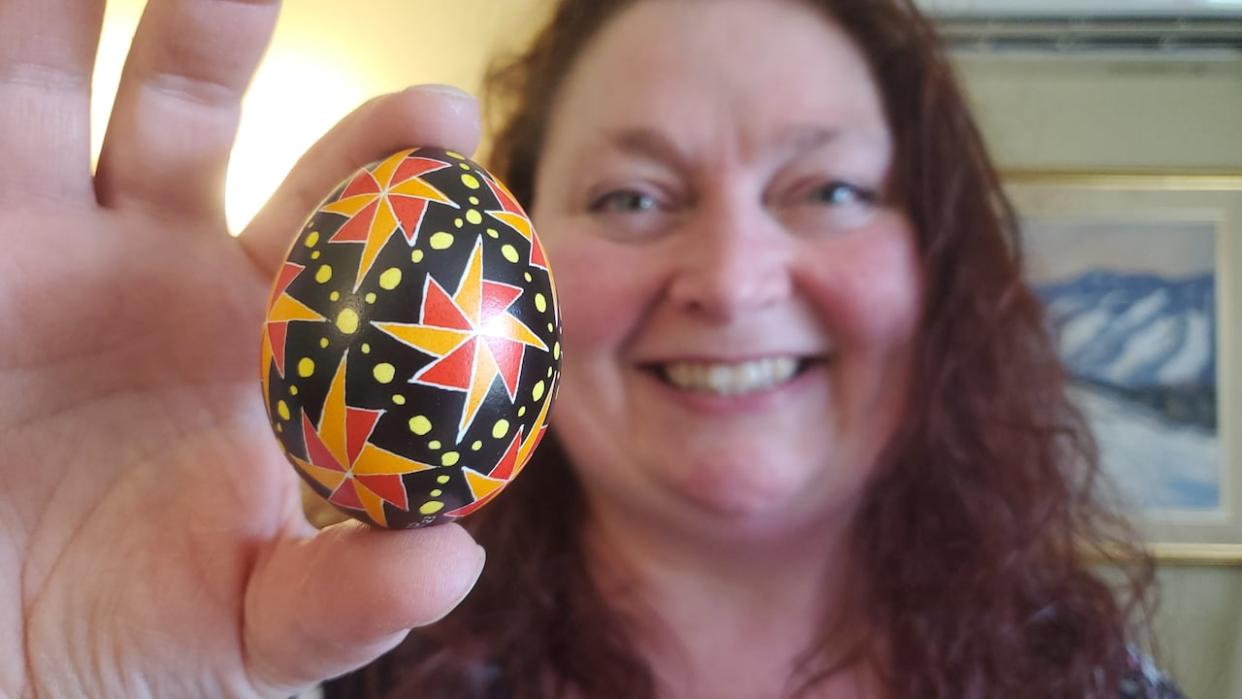
With unwavering hands, Larissa Reinders carefully uses a kistka to write a design in beeswax on a hollowed-out egg.
As she gently lifts the kistka off the egg, she brings it to a lit candle, heating the tool before bringing it back to the fragile shell.
This is the traditional Ukrainian art of pysanky.
For Reinders, a henna artist of 20 years, the work allowed her to better connect with her Ukrainian roots.
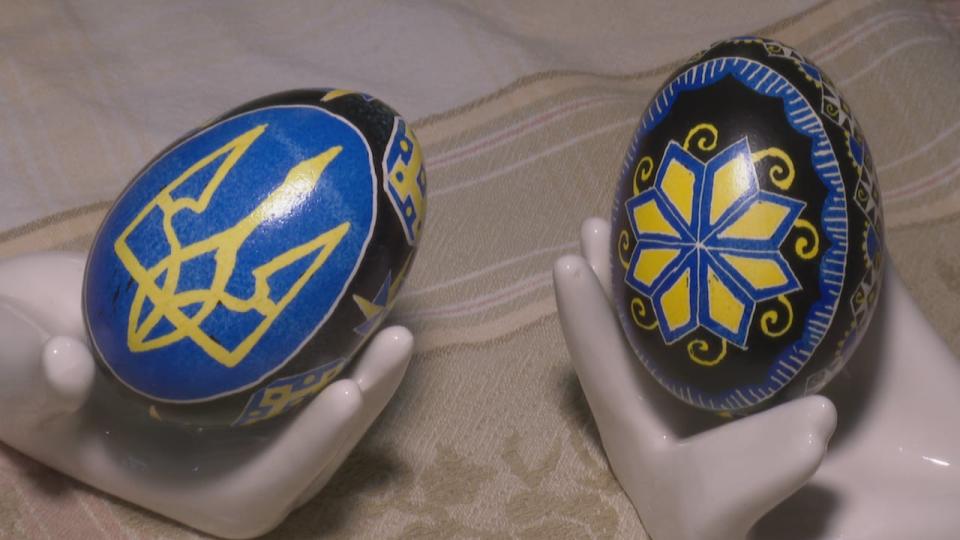
Two of Reinders's designs, pictured here, were done in the Ukrainian flag colours. (Shane Fowler/CBC)
"My dad's Ukrainian and we were raised not so much with any of our Ukrainian traditions," she said.
"So, I've been on this journey to reclaim the half of my soul in my life that was not so much denied, but … just kind of missing."
WATCH | With a steady hand, artist carefully crafts a delicate masterpiece:
Pysanky — or pysanka in the singular form — is the decorating of eggs using a wax-resist method.
The designs are applied to the egg using a special tool called a kistka, which is loaded with beeswax and, once heated in a flame, allows the wax to move through the tip in either a fine, medium or heavy flow, depending on the tool.
When Reinders lived in Calgary several years ago, she said she always wanted to try making a pysanka, but she felt self-conscious, that she wasn't Ukrainian enough to take up the practice.
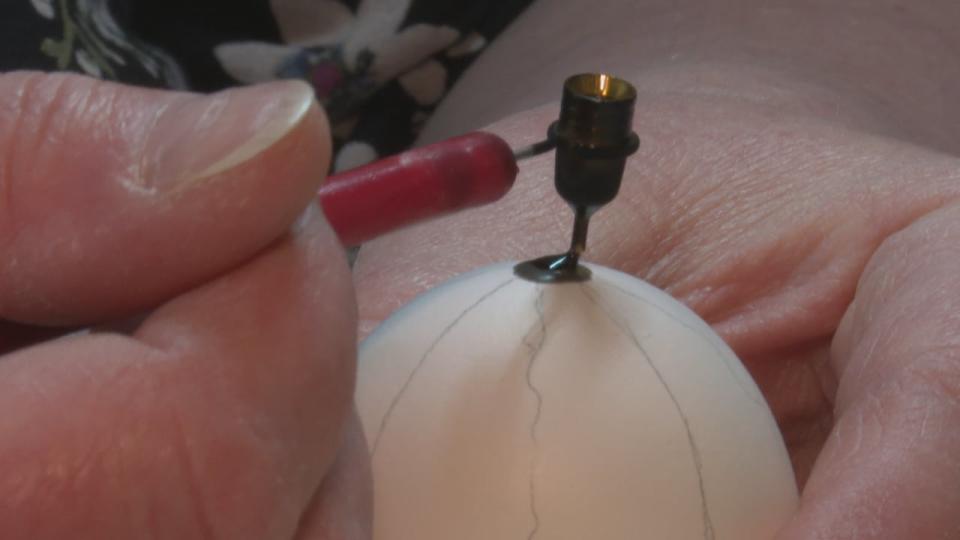
Reinders uses a kistka to plug the hole on the bottom of the egg, where it was emptied. The hole has to be plugged before the egg is dipped in the dye bath to prevent it from filling. (Shane Fowler/CBC)
But two years ago, she attended a workshop in Fredericton with her family, and it was her first time writing eggs. Then she started to practise more frequently and now she has her own business, Moonshadow Art, and even teaches workshops of her own.
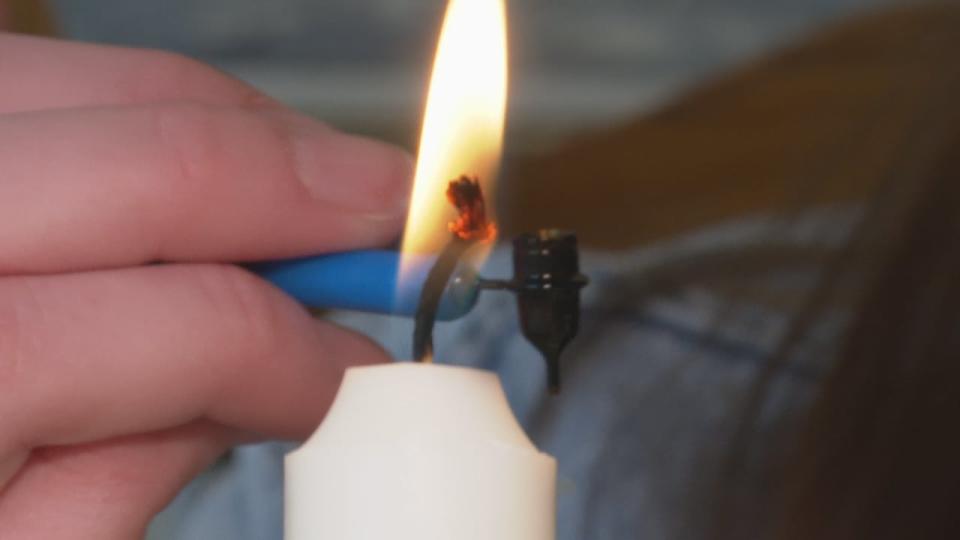
To heat the beeswax inside the kistka, it is held against an open flame, before using it to write the egg. (Shane Fowler/CBC)
When writing an egg, Reinders said she will usually have her headphones in, listening to Ukrainian music.
"I go to a place where I feel like I'm at home."
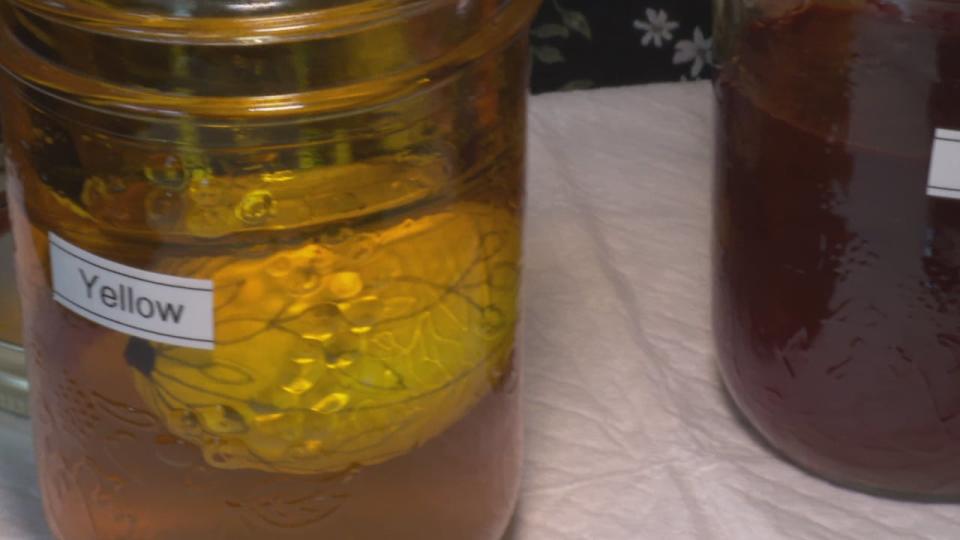
The eggs are dyed, beginning with lightest colour. (Shane Fowler/CBC)
Reinders said the term write is used, as opposed to paint, because when the lines are drawn onto the egg in wax, they resist the dye bath and stay white.
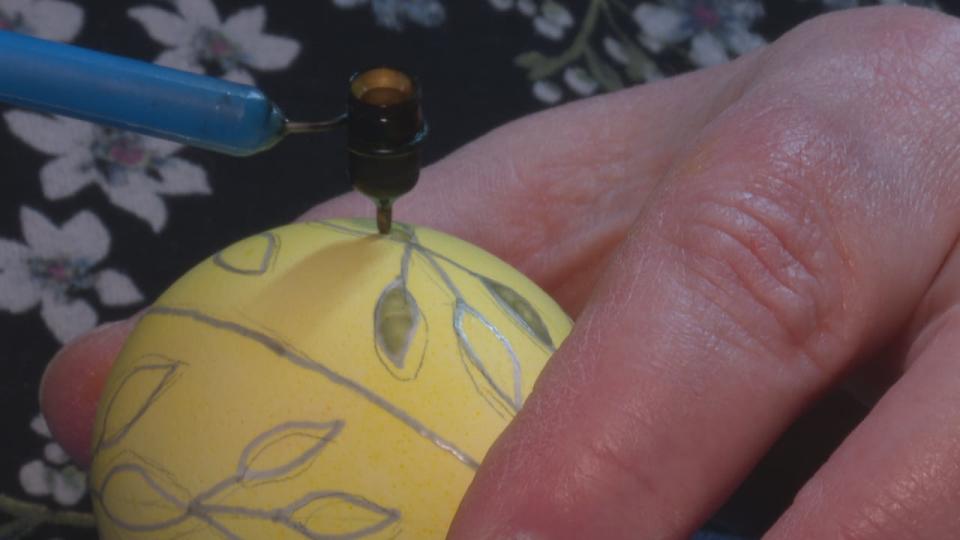
Reinders uses a kistka to fill in the leaves on her pysanka. (Shane Fowler/CBC)
The first step is the line work on the egg, then the first colour, beginning with a dye bath of the lightest colour. Then, using a kistka with a wider tip, the shading process can begin for the parts of the egg that are to stay the first colour. Then, it is dipped again and so on, until the colours are complete.
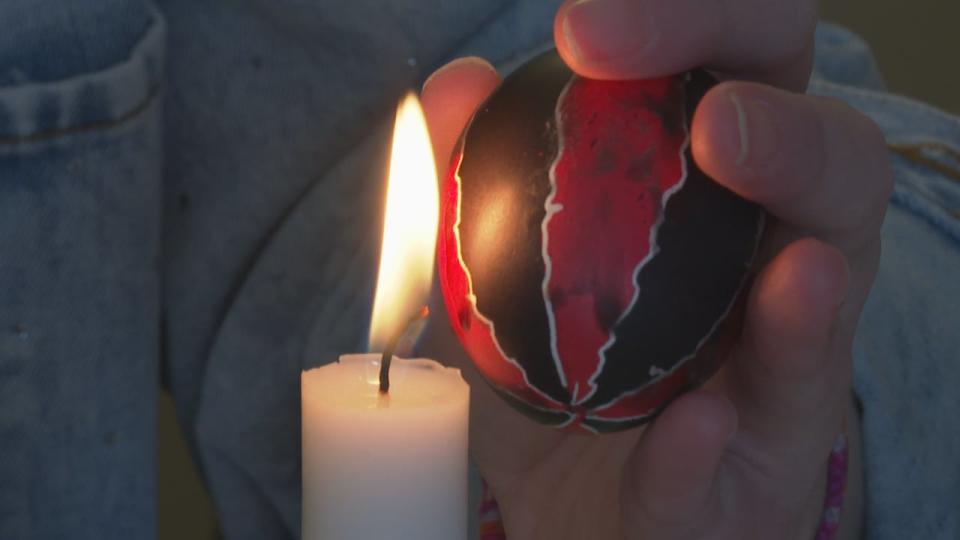
At the end of the process, the egg is held up to an open flame to melt off the wax and reveal the colours underneath. (Shane Fowler/CBC)
Then, using a lit candle, the artist melts the wax off the egg and wipes to reveal the design underneath.
It's a long process that can take a few hours from start to finish, said Reinders. For the supply teacher and henna artist, finding the time was challenging. But she said she likes to write late at night.
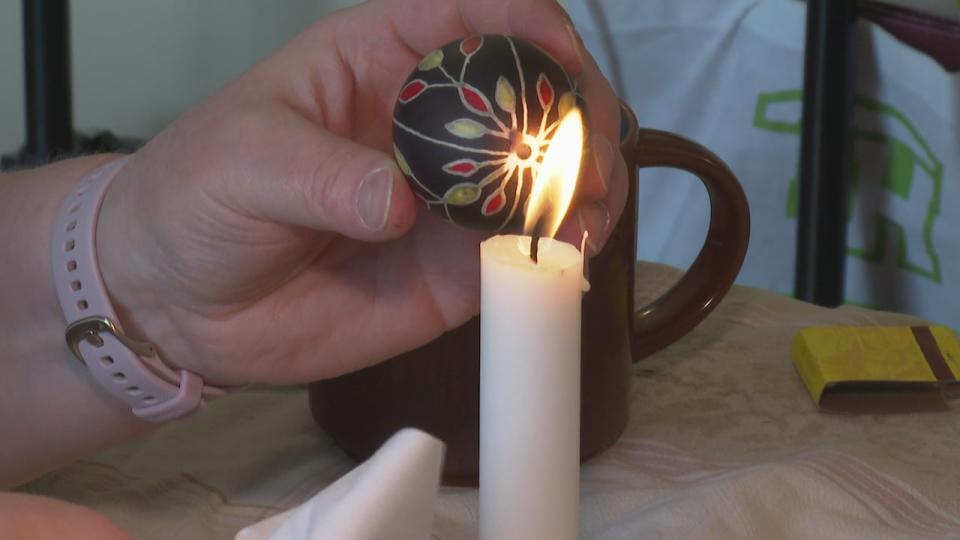
Reinders uses the open flame to melt the plug off of the bottom of the egg. She said this must be done before melting off the rest of the egg to prevent it from getting too hot and breaking. (Shane Fowler/CBC)
"Once the day is done. I like the calm and peace at night, so I work at my studio. Everybody's asleep, it's dark, and I can just focus in and give myself that time."
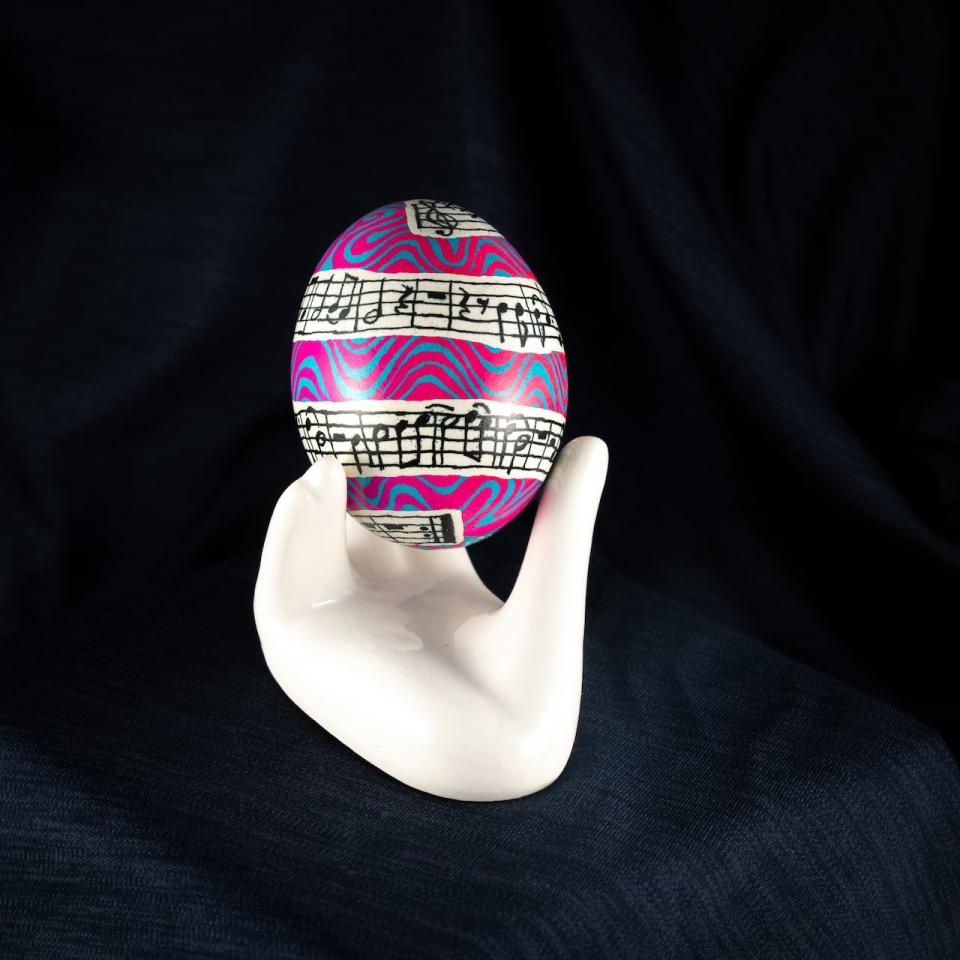
This egg was given as a gift to one of Reinders's friends for her 50th birthday. Reinders, who is also a musician, wrote the melody for the Leonard Cohen song, If It Be Your Will, on the egg. (Jeff Fevens/Submitted by Larissa Reinders)
Reinders said making pysanky has allowed her to see herself in a different way. As a henna artist, all of her work would eventually fade away, but the eggs have allowed her to work in a tangible medium that she can give to friends and family.
Connection with family, heritage
For Reinders, the art has also been spiritual.
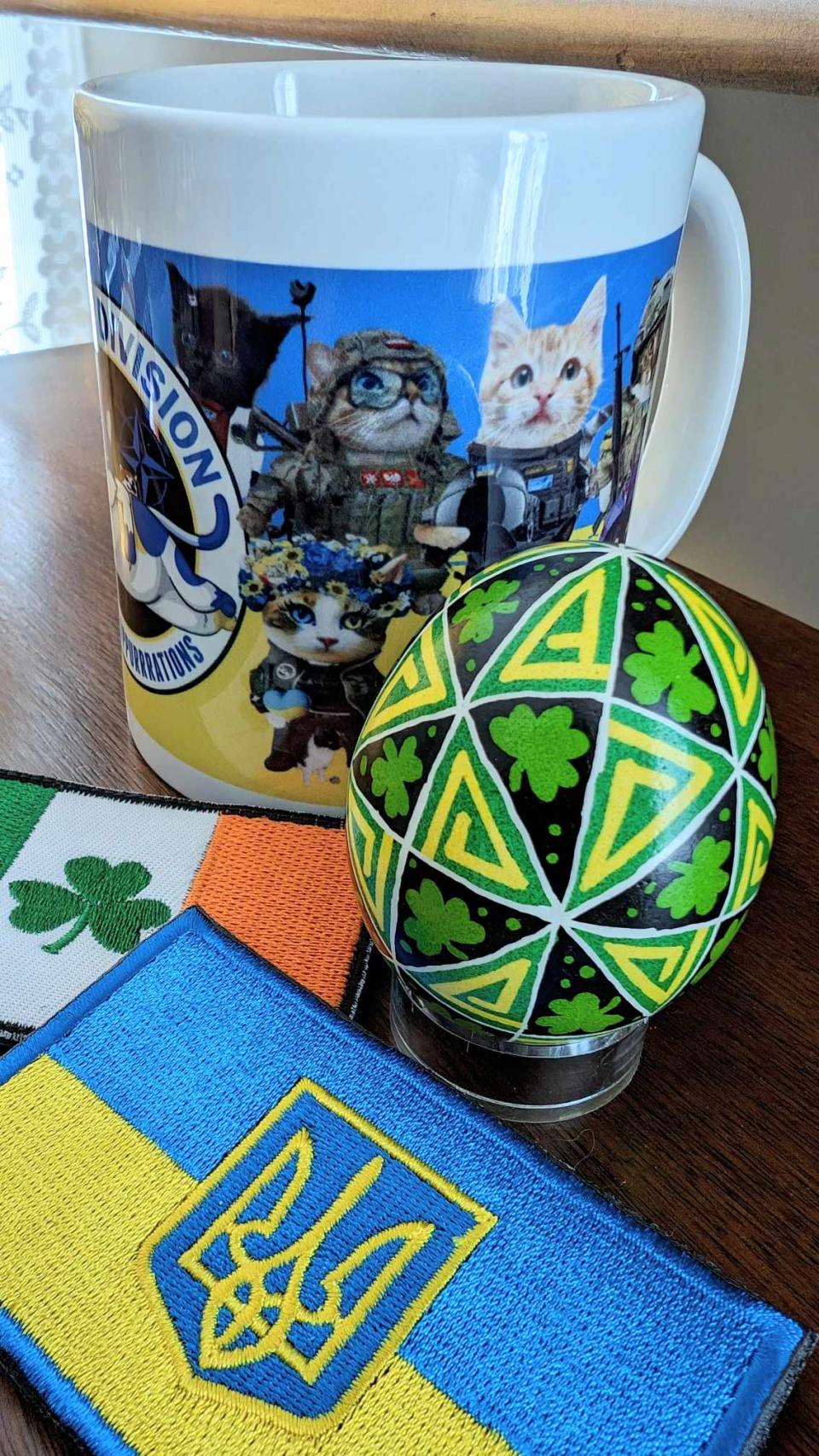
One of Reinders's pysanka, decorated with shamrocks, was used in a fundraiser to raise money for Ukrainian humanitarian relief and it is now in Austria. (Submitted by Larissa Reinders)
"When I'm writing, I feel such a deep connection with my family, people who aren't here anymore — my father passed a few years ago," she said.
Reinders has a book with traditional designs, but she has also translated other experiences onto an egg, including a pysanka she made with a lovebird design for a neighbour who was reunited with her lovebird after it went missing overnight.
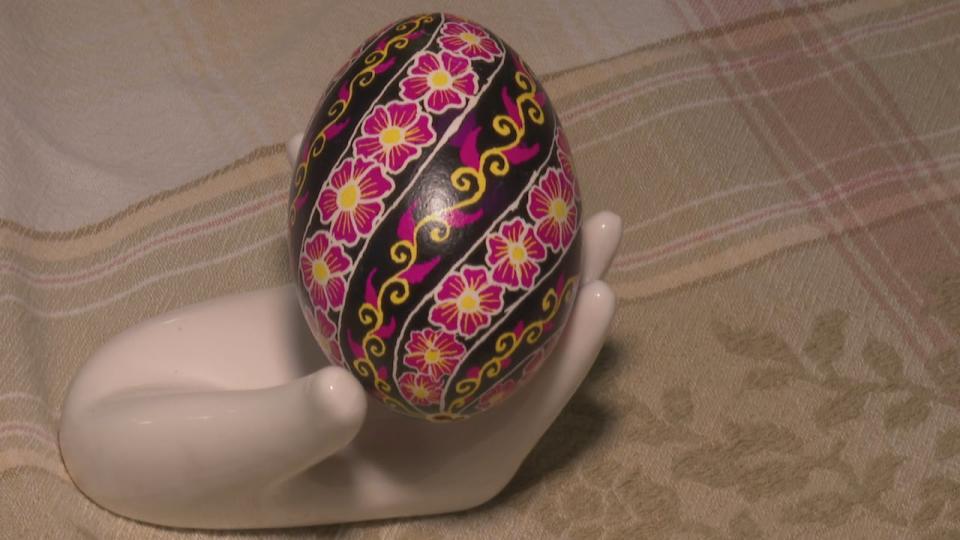
One of Reinder's pysanka using floral and curve details. (Shane Fowler/CBC)
And she said some of her designs just come from her head, rather than from a book or an experience.
Since beginning to write eggs more frequently only a little over a year ago, Reinders said she has learned something about herself.
"I've learned that my personality is a lot more Ukrainian than I ever believed," she said.
"It's almost like ancient DNA. You have something inside of you that sort of comes out when you write an egg."

